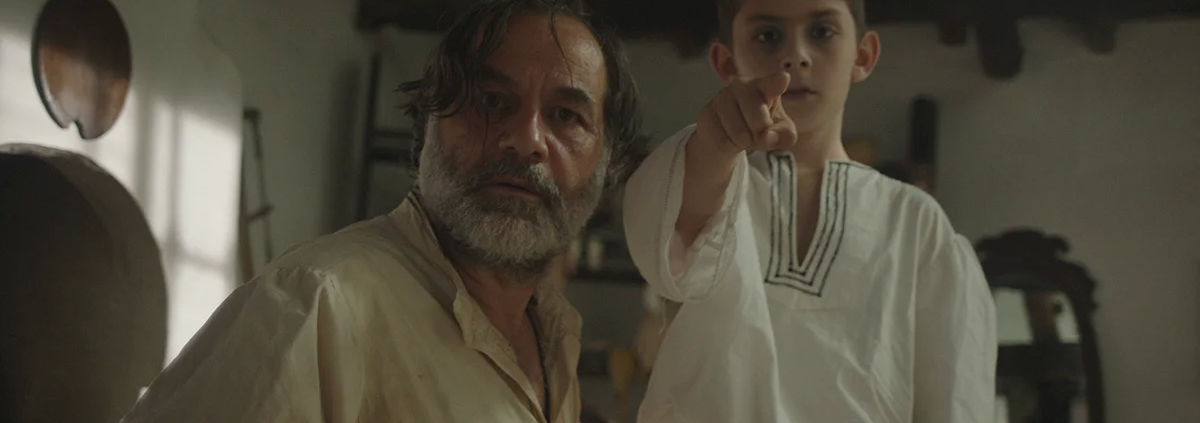“Ninullë” (Lullaby), a short film of universal dimensions
Written in 1782, Goethe’s poem “Erlkönig”, has since inspired numerous screenwriters and cinematographers across the world to present their audiences a universal human dimension: anxiety!
Goethe’s poetic ballad tells the story of a man with his sick son in his arms, who. on a stormy night, ride on horseback through a swampy forest. According to the legend with the same title, mysterious, malevolent beings appear in swampy areas and lead people to death. Also in Goethe’s ballad, a mysterious being appears to the child, and the father tries to convince his son that it is just hallucinations caused by the fear of his “sickness”.
The mysterious being is increasingly present in the child’s vision, inviting the little one to accompany him to his palace, while the father keeps providing rational explanations for the voices that the child hears, such as the sound of the wind blowing through the leaves…
On a journey, in which the vision is blurred by darkness, human beings go through their path carrying all their inherited prejudices, even those related to mysterious beings…
Deeply worried and anxious to save “his child”, the father rushes to their hut! Yet, he doesn’t make it on time! The child dies in his arms!
The interpretations of Goethe’s ballad are many. However, in my opinion, a significant aspect that should be emphasized is the context in which the ballad is set – that is, the swampy forest – and the “malarial” fever that has struck the child. It could be referring to the anxiety that grips someone at crucial moments of his life, when along the difficult journey to reach maturity as a human being, one must also fight the childish traits he carries within as well as all his inherited prejudices… Nonetheless, the end of the ballad is well-known!
***
It was thanks to a friend of mine that I had the chance to watch the short film “Ninullë” written and directed by Adrian Asllani and released on February 2023
I was surprised by the extraordinary imagination of this young man, who had set Goethe’s poem in a very original context.
In contradiction to the father of in Goethe’s ballad, who, through rusting leaves, rides to the hut with the child in his arm, the character of the movie “Ninullë”, a puppet master played masterfully by Avni Dalipi, together with the “sick” child played brilliantly by Lis Kamberi, are in the “hut”. And the noises that “feed the fear” come from outside, as in the case of slamming doors.
In relation to the cinematographic elements, it could be maintained that this short film features masterfully contrasted bright lighting and dark shadows, whereas the use of silence as a dramaturgical tool takes on special significance. In short, this is a movie that focusing on the characteristic “father and son” relationship, reveals the pain of the human soul and, thus, penetrates the dramatic dimension of life.
It is difficult to determine whether it is the inner struggle of man in his journey to maturity, or other external factors that cause profound anxiety to the character of this short film, yet, as an art historian, I think it is an undeniable fact that Adrian Asllani has come up with a very original artistic interpretation of a ballad present in European culture for two and a half centuries! He managed to incorporate universal values in a short film, which is profoundly admirable.
Jëlldëz Asani is Professor of Art History at the State University of Tetova and at “Hasan Prishtina” University, in Pristina.




Leave a Reply
Want to join the discussion?Feel free to contribute!